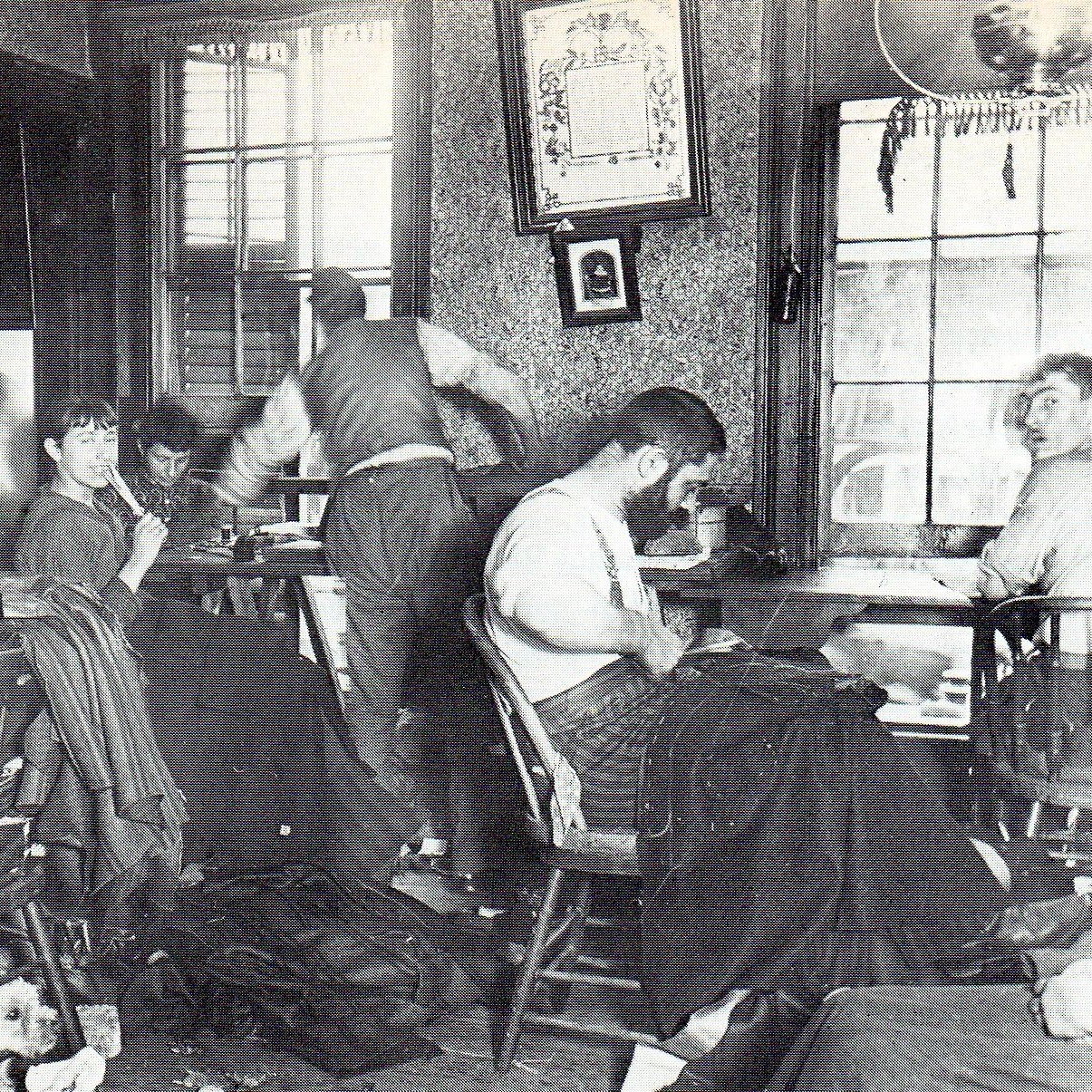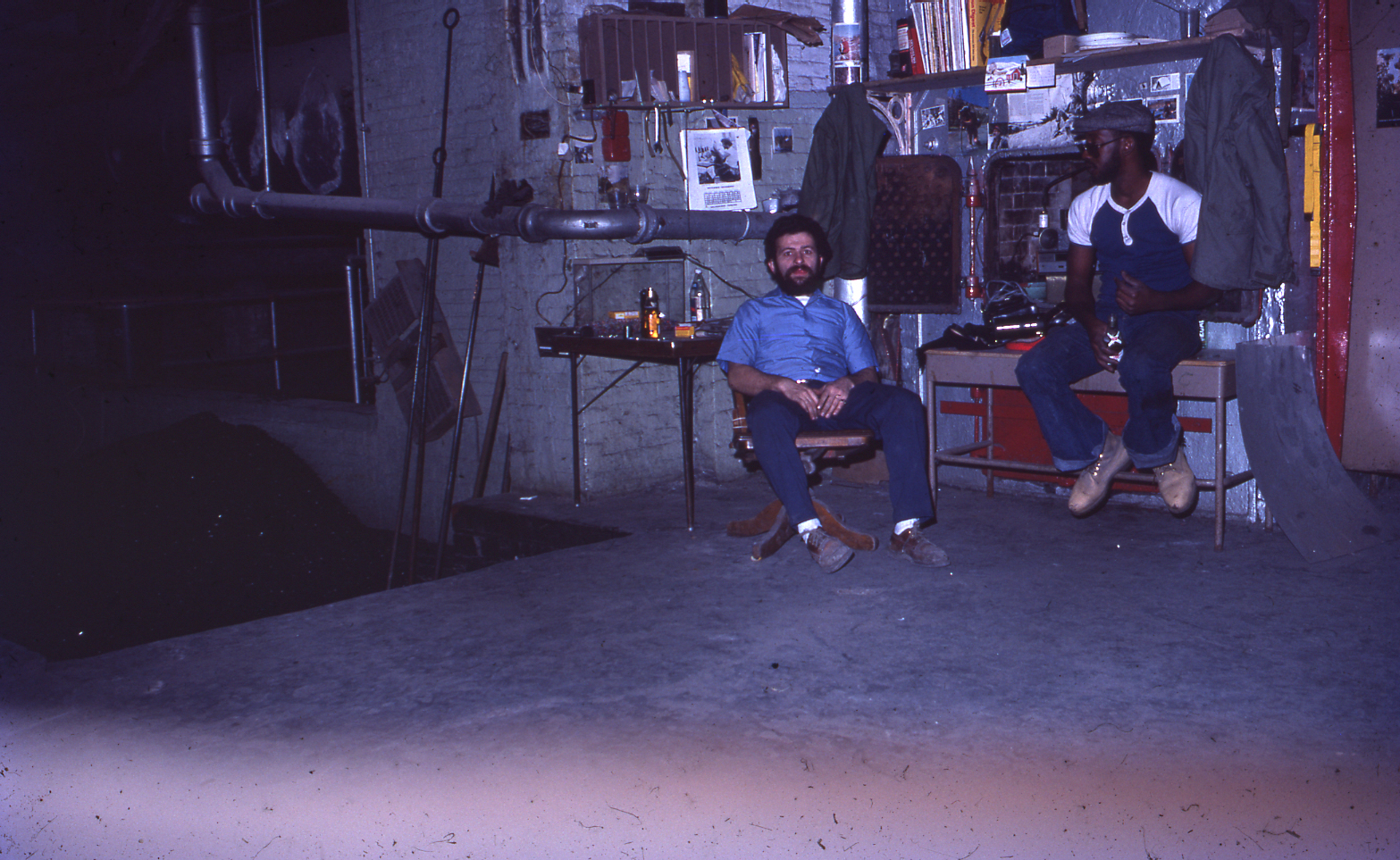In 1988, 97 Orchard Street was just a building. The last residents left in 1935 and it became a storage unit for storefront businesses and a time capsule for historians, as the majority of the building was left untouched for decades. Since the inception of the Museum, we have been undergoing key archaeological projects – essentially taking the buildings apart to put them back together again – to develop our exhibit spaces and ensure the structures will stay safely standing for our staff and visitors. During these processes, we’ve been sifting, searching, and finding remnants of the past left on the walls and beneath the wallpaper, hidden in the floors and fireplaces. These forgotten things left behind help us understand more about the former residents, and the lives they led.
What Gets Left Behind

The garment industry employed large numbers of immigrants in the late 19th and early 20th century, as the desire for ready-made clothing purchased in shops grew exponentially following the Civil War. One survey taken in the 1890s found 23 garment shops on this block of Orchard Street alone, so it was important for the Museum to have this reflected in our exhibits.
Indeed, as our curators and historians began preserving the building, they discovered lost objects that showcase the industry within our tenement walls. This spool of thread was found in 1993 in a third-floor rear apartment, one of several dozen spools now a part of our collection. The pattern tracing wheel, also recovered from our excavation work, was used in cutting shops that used paper patterns for workers to trace over onto pieces of fabric. The spokes of the wheel transferred the pattern onto the fabric, revealing where to cut. It was also used in positioning drafts, pockets, and fitting marks.
Both tools, but especially the pattern tracing wheel, testify to the presence of tenement garment work inside 97 Orchard Street. We were able to use these objects, along with primary resources like census records and factory reports, to open an exhibit in 2002 showcasing the home and garment factory of Harris and Jennie Levine, who ran a ladies garment shop from their apartment in 97 Orchard Street from 1892 to 1904. While the primary sources gave us names and dates, it is these tangible objects that bring to life the reality of working in these tight spaces.
Explore the recreated parlor of the Levine family below. Click on the (+) buttons for details of the garment factory. For best results, view in fullscreen by clicking the “fullscreen” button in the top right corner.
Josephine Baldizzi was just a little girl during the Great Depression when she and her family lived at 97 Orchard Street, up until its closure in 1935. But when she visited the building again over 50 years later, the stories she told to the Tenement Museum made it feel like it was only yesterday. It was Josephine who pointed out one of the largest archaeological finds in the building – a decorative cabinet built into the wall of one of the ruined apartments.
Original cabinet (right) built by Adolfo Baldizzi in the 1930s, as it was found in 1988.
Josephine recalled how her father, Adolfo, built the cabinet in their kitchen. This cabinet perfectly illustrates the way in which a tenant elaborates upon the landlord’s accommodations to achieve a sense of ownership. Aldolfo, a skilled carpenter and cabinetmaker, spent much of the Great Depression struggling to find work while his wife, Rosaria, found a job working in a garment factory. Not content with the modest kitchen shelving installed by the landlord and to improve the quality of life for his own family, Adolfo built a cabinet around these original shelves. In so doing, he converted the basic shelves into a cabinet with hinged glazed doors, two sliding drawers, and a decorative flourish. He then painted his new cabinet the same color as the walls. While he did his best to match the color, the cabinet is slightly lighter than the kitchen walls.
The Museum took careful consideration to preserve this cabinet and made sure to incorporate it into the Baldizzi’s recreated home. It invites the opportunity to ask questions that disrupt the preconceived notions of how people lived in tenements during this time. Whether its layers of wallpaper, fragments of cheap linoleum flooring, or a beautifully crafted, one-of-a-kind decorative cabinet – there was an undeniable effort and care taken to make these spaces feel like home for themselves and their families.
Always looking to tell more stories, the Museum opened a new exhibit at 103 Orchard Street in 2017. The Saez Velez family, whose kitchen and living room are part of our recreation, were Puerto Rican migrants who lived on Orchard Street in the 1960s and 70s. The more modern aspects of the building do not mean there’s any less to discover. In fact, with less time to wear away at the building and the objects inside, and with families living there up until the 21st century, we had plenty to find to add to our detail and understanding.

The Velez brothers are something like kindred spirits to the Museum. José Velez, entrepreneurial from a young age, became the superintendent of the building in 1964 at just 14 years old. It was a job he took with great pride, cleaning the halls, fixing fuses, replacing windows, and even attracting new tenants. By 1982, his older brother Andy had taken over the job and José had moved back to Puerto Rico. It is likely thanks to their dedication to the job that ensured the building could help the Museum grow.
Left behind by both brothers was this toolbox, cluttered and well-used, filled with tools to keep the building upright and out-of-place items like the playing cards, that the brothers used to socialize with their neighbors. This toolbox is deeply familiar to anyone with a junk drawer in their kitchen but, as an artifact, it is deeply significant to the Museum. It represents just how connected the Saez Velezes were to 103 Orchard Street. It wasn’t just a home or a job to them. The building was part of the family.
Explore Andy and José’s toolbox. Does it remind you of any box, chest, or drawer in your home?